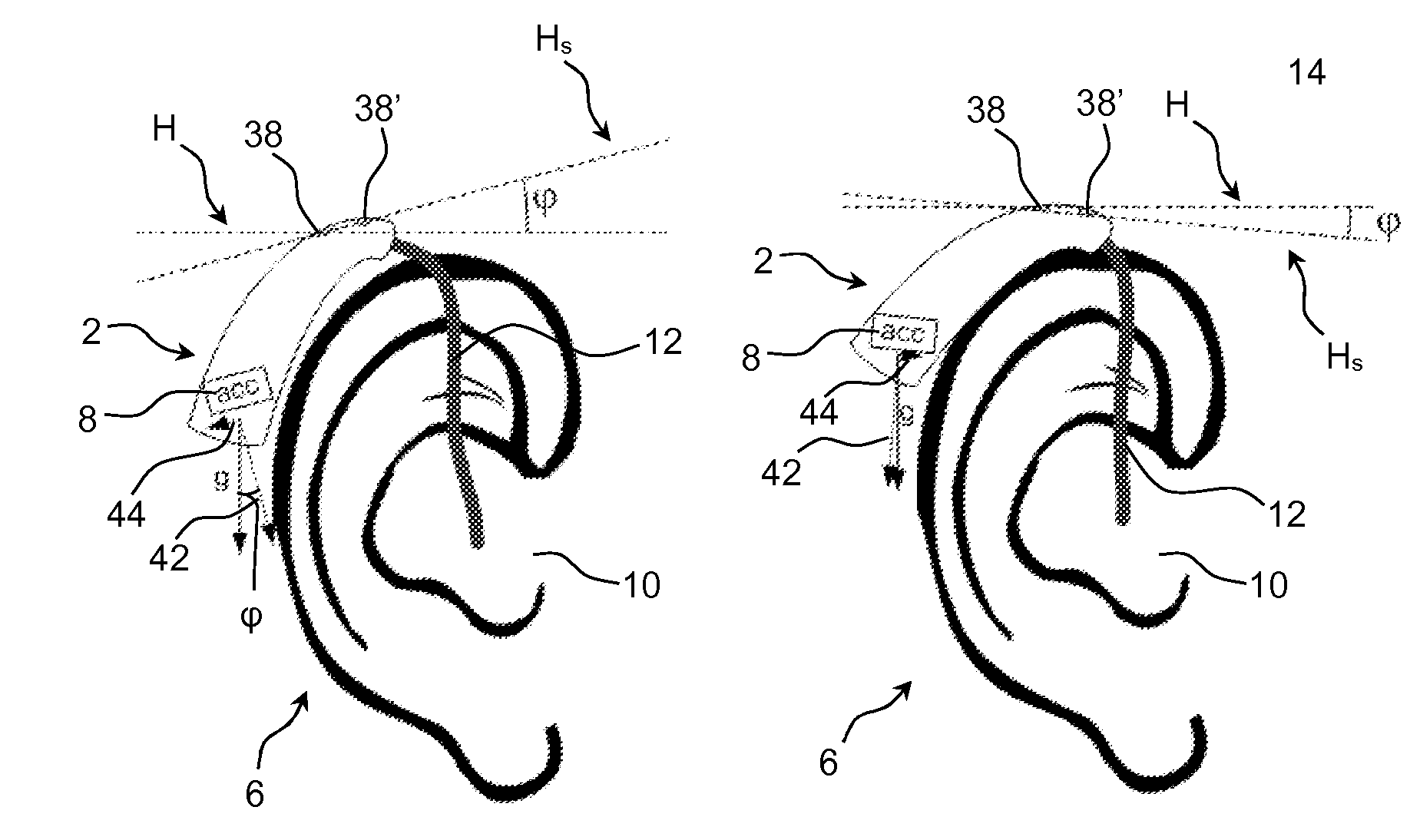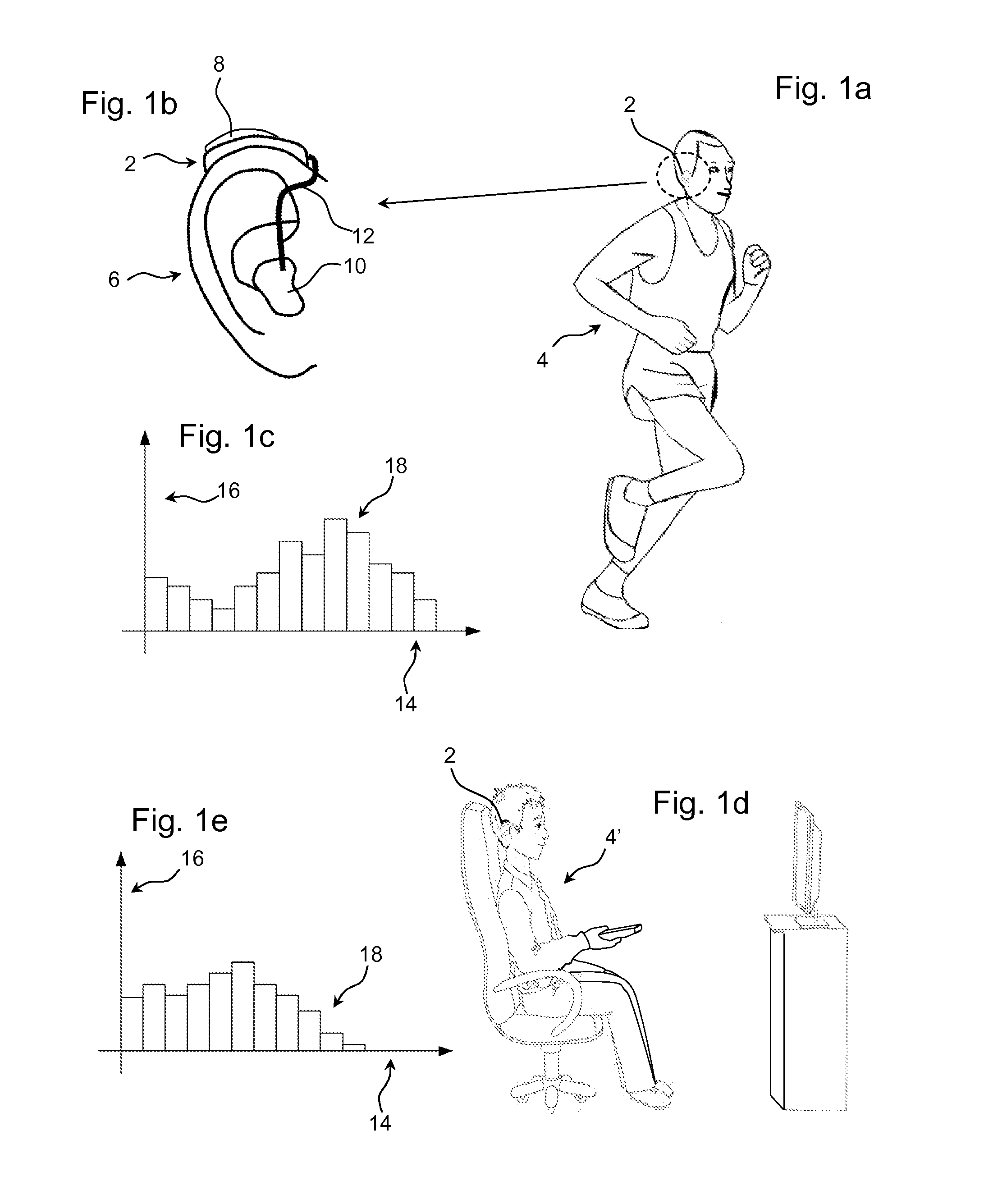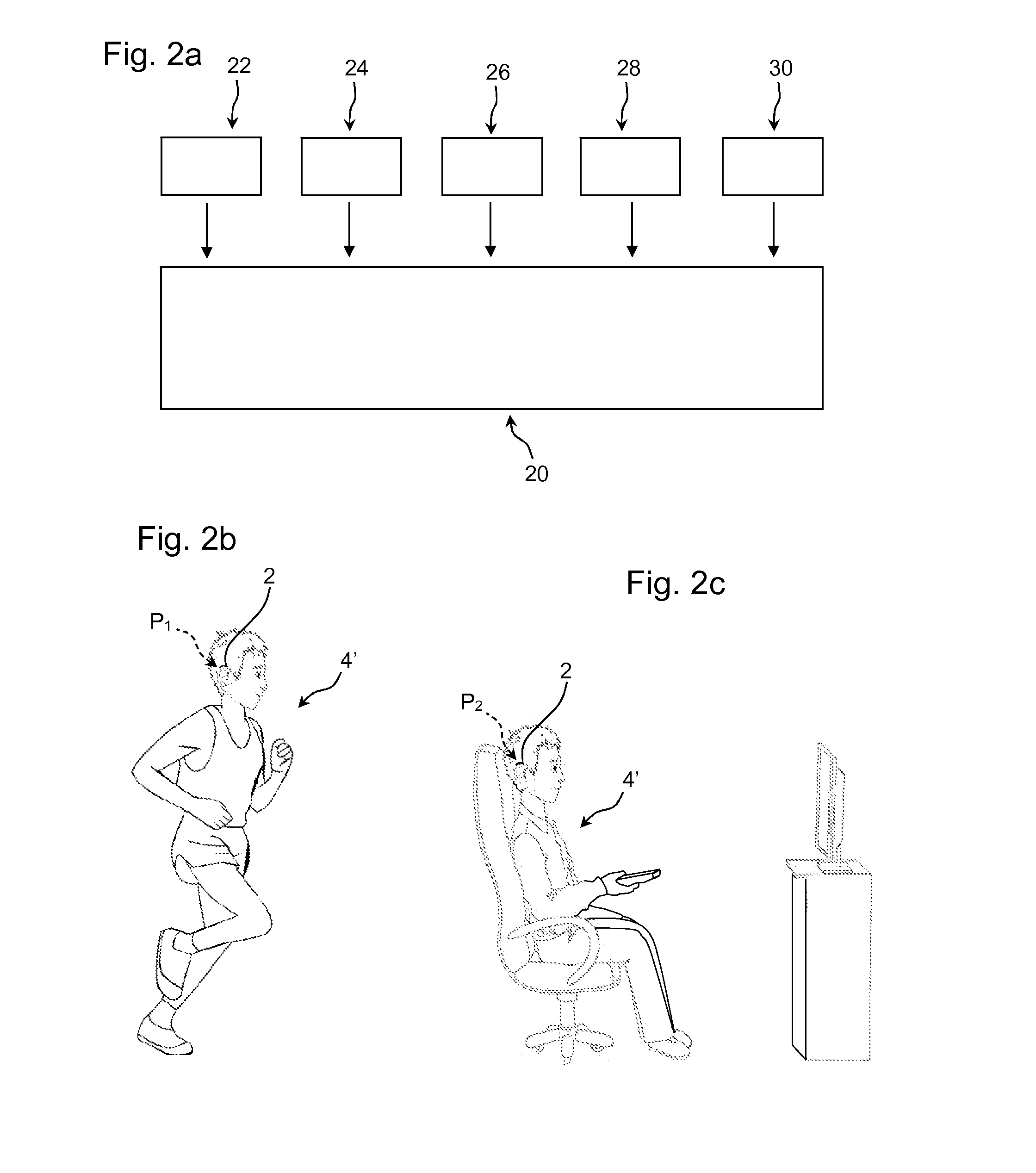Hearing aid device comprising a sensor member
a technology of sensor and hearing aid, which is applied in the direction of hearing aid housing, electrical transducer, instruments, etc., can solve the problems of difficult access to parameters and quantification
- Summary
- Abstract
- Description
- Claims
- Application Information
AI Technical Summary
Benefits of technology
Problems solved by technology
Method used
Image
Examples
example 1
[0279]How to Measure Pitch, Yaw and Roll using a Movement Sensor:
[0280]Pitch, yaw and roll represent angles of rotation around respective orthogonal axes of a center of mass of an aircraft. In the following, these terms are used for a head of a user of a hearing aid device or a binaural hearing aid system comprising left and right hearing aid devices adapted for being located at or in left and right ears of a user respectively.
[0281]A definition of the rotational movement parameters pitch, yaw and roll relative to the x, y and z axis of an orthogonal coordinate system is illustrated in the left graph of FIG. 11a. Roll is defined as a rotation around the x-axis. Pitch is defined as a rotation around the y-axis. Yaw is defined as a rotation around the z-axis. The corresponding parameters are exemplified relative to a head of a user in the right graph of FIG. 11a.
[0282]Pitch is defined as a rotation of the head around the x-axis. Can be measured by either a single or a pair of hearing...
example 2
[0288]This example deals with achieving a higher accuracy for linear head movement estimates using two or more accelerometers. If the acceleration measured in the same geometric plane by a pair or more accelerometers are averaged, the precision increases and unwanted rotational information can be removed. The example shown in FIG. 12b becomes: a1x=alin+arot and a2x=alin−arot, if the point of rotation is centered. Adding the two provides: a1x+a2x=(alin+arot)+(alin−arot)=2alin, and hence: alin=(a1x+a2x) / 2. Further, the precision is improved by 3 dB.
example 3
[0289]This example deals with estimating the distance between the hearing aids. If at least one accelerometer and one gyroscope are present (either in one hearing aid or in a pair), it is possible to estimate the distance from the center of rotation to the sensors. The gyroscope will provide the angular velocity ωg and the accelerometer provides aa=rωg2. Solving for radius r gives:
r=aaωg2.
Assuming that the center of rotation is following a normal distribution it is possible to estimate the radius and so the distance between the hearing aids (2×radius) by averaging a large number of radius values r.
PUM
 Login to View More
Login to View More Abstract
Description
Claims
Application Information
 Login to View More
Login to View More - R&D
- Intellectual Property
- Life Sciences
- Materials
- Tech Scout
- Unparalleled Data Quality
- Higher Quality Content
- 60% Fewer Hallucinations
Browse by: Latest US Patents, China's latest patents, Technical Efficacy Thesaurus, Application Domain, Technology Topic, Popular Technical Reports.
© 2025 PatSnap. All rights reserved.Legal|Privacy policy|Modern Slavery Act Transparency Statement|Sitemap|About US| Contact US: help@patsnap.com



